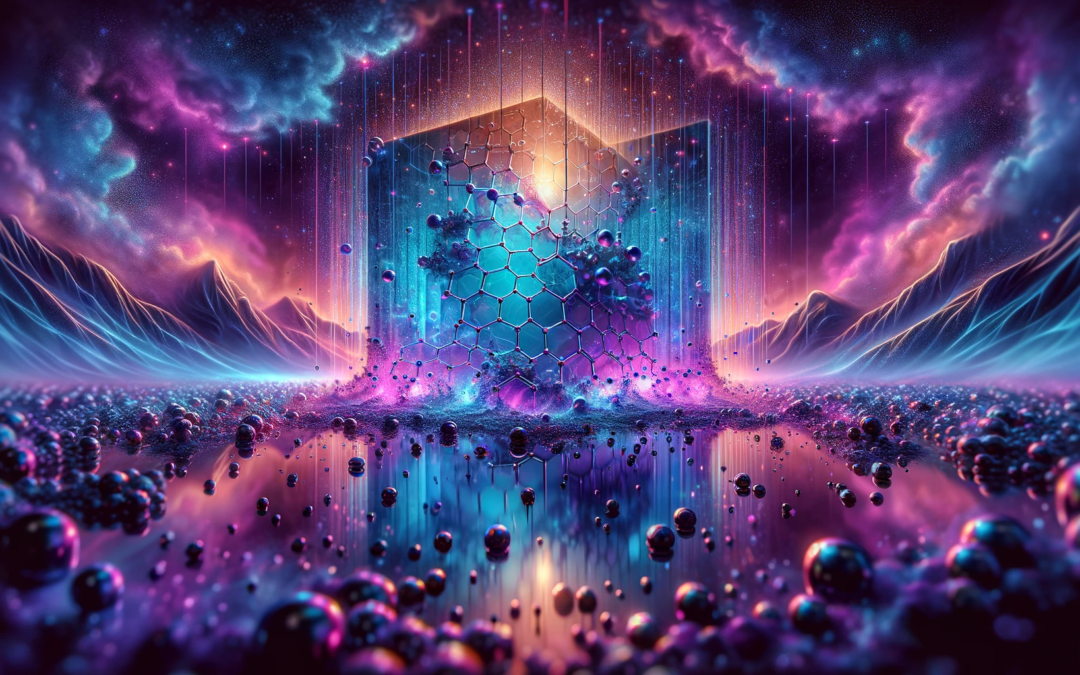In the realm of scientific exploration and advancement, the pursuit of understanding materials at their most fundamental level often leads us down paths of unexpected marvel and potential. Among these materials, graphene oxide (GO) stands as a beacon of possibility, particularly when subjected to the enigmatic influence of ultraviolet (UV) light. It is in this intersection of graphene oxide and UV rays that we find a narrative not just of atoms and photons, but of potential future revolutions in technology and material science.
Graphene oxide, a derivative of graphene, is celebrated for its extraordinary properties. It’s like a canvas of atomic thickness, ripe for manipulation and transformation. This material, composed of carbon, hydrogen, and oxygen, harbors a symphony of atoms arranged in a two-dimensional plane, yet its true potential is often locked away, dormant, until the right key is found to unlock it. This key, it turns out, could be as pervasive and as readily available as ultraviolet light.
Ultraviolet light, a type of electromagnetic radiation, is a tool often used in the realm of science to probe and interact with materials at a molecular and atomic level. When UV light interacts with graphene oxide, it does more than just illuminate; it transforms. The energy from UV photons is absorbed by the atomic structure of graphene oxide, causing a fascinating dance of electrons and bonds. This interaction leads to a phenomenon known as photoreduction.
In simple terms, the UV light effectively removes oxygen groups attached to the graphene oxide, altering its atomic structure. This change is not merely superficial; it fundamentally transforms the properties of the material. By reducing the oxygen content, the electrical conductivity of GO increases, inching it closer to the conductivity of pristine graphene, which is renowned for being one of the best conductors of electricity.
But the marvel of UV light’s interaction with graphene oxide extends beyond just improving conductivity. This process can activate the material at a subatomic level. What does this mean? Essentially, under the influence of UV light, the atomic structure of graphene oxide reorganizes. This reorganization can lead to the creation of new and unique electronic states, potentially giving rise to novel properties that were not present before.
The implications of this are vast and varied. For instance, in the field of electronics, such activated graphene oxide could lead to the development of more efficient transistors, sensors, and batteries. In environmental science, it could enhance the material’s ability to adsorb pollutants, leading to more effective methods for water purification and air filtration. In medicine, this could pave the way for advanced drug delivery systems and biosensors.
However, the journey from laboratory to real-world application is fraught with challenges. One of the primary hurdles is controlling the process precisely. The extent of photoreduction and the properties of the resulting material depend heavily on the intensity and wavelength of the UV light, as well as the duration of exposure. Achieving a uniform and controlled alteration of GO at a large scale remains a significant challenge.
Moreover, while the prospects are exciting, the ethical considerations surrounding the development and use of such advanced materials must not be overlooked. As we venture further into manipulating materials at a subatomic level, we must remain vigilant about the potential environmental and health impacts of these technologies.
In conclusion, the interaction of UV light with graphene oxide opens a door to a world of possibilities. It stands as a testament to human ingenuity and the relentless pursuit of understanding the world at its most fundamental level. As researchers continue to unravel the mysteries of this interaction and harness its potential, we may find ourselves on the cusp of a new era in material science, one illuminated by the subtle yet profound power of light itself.










